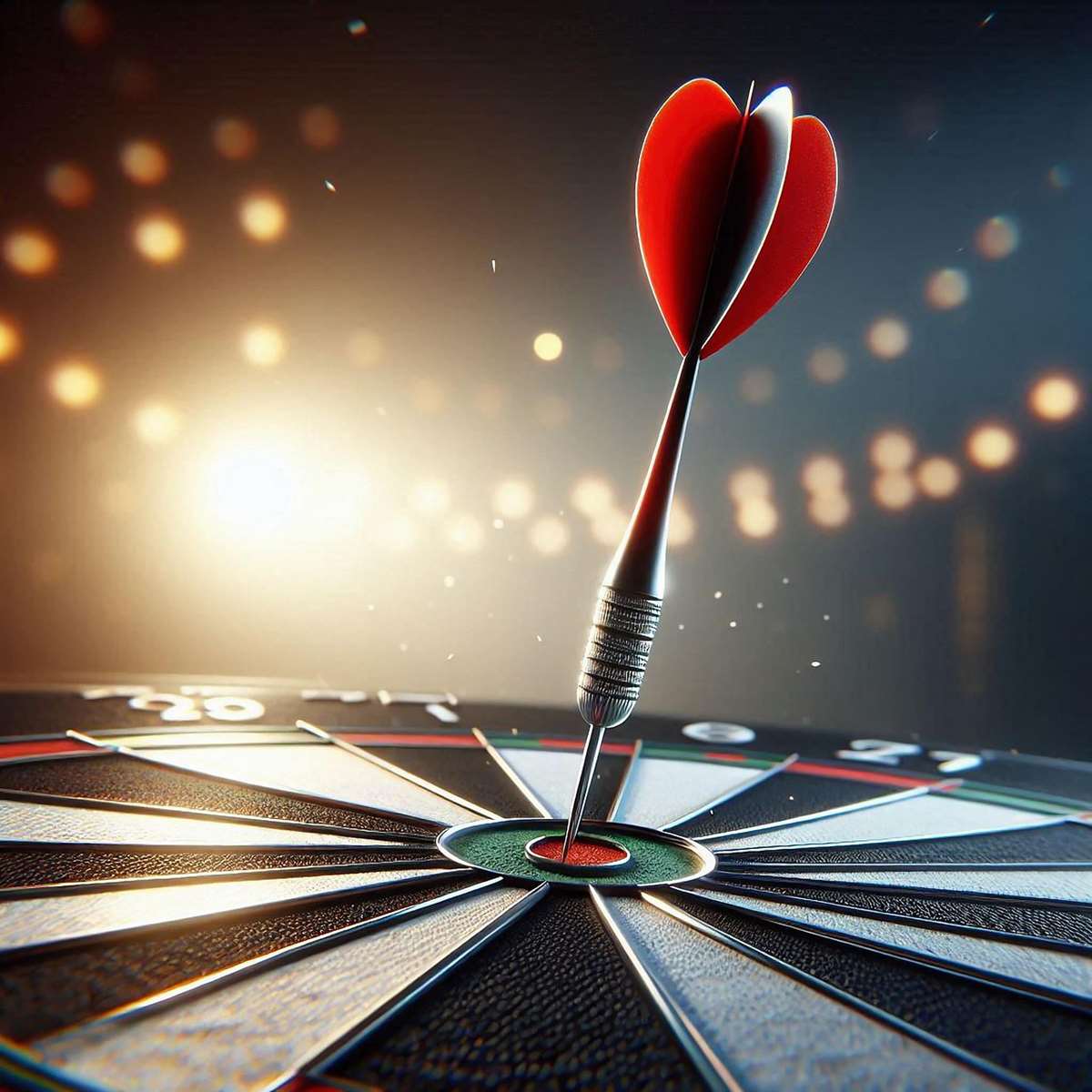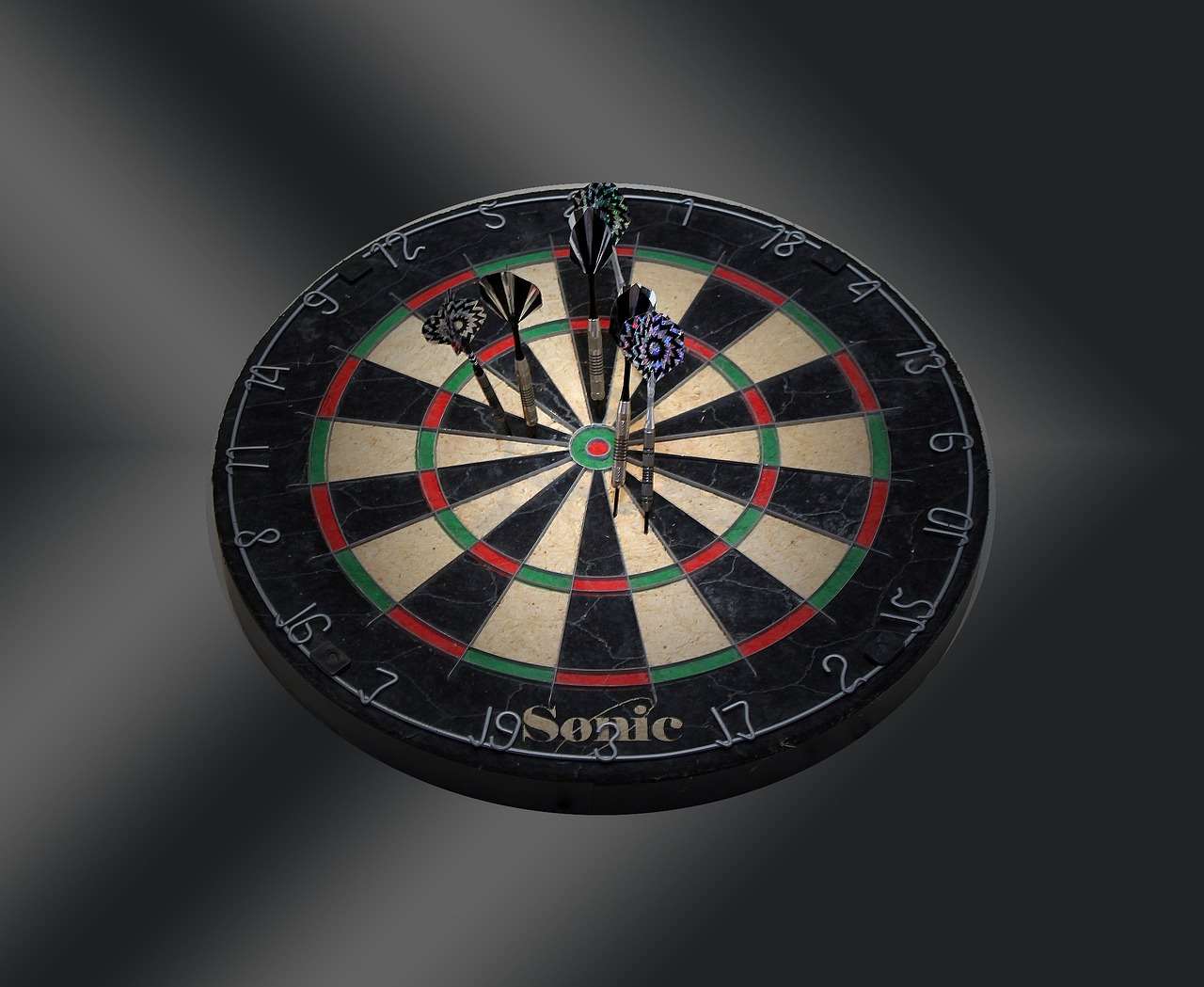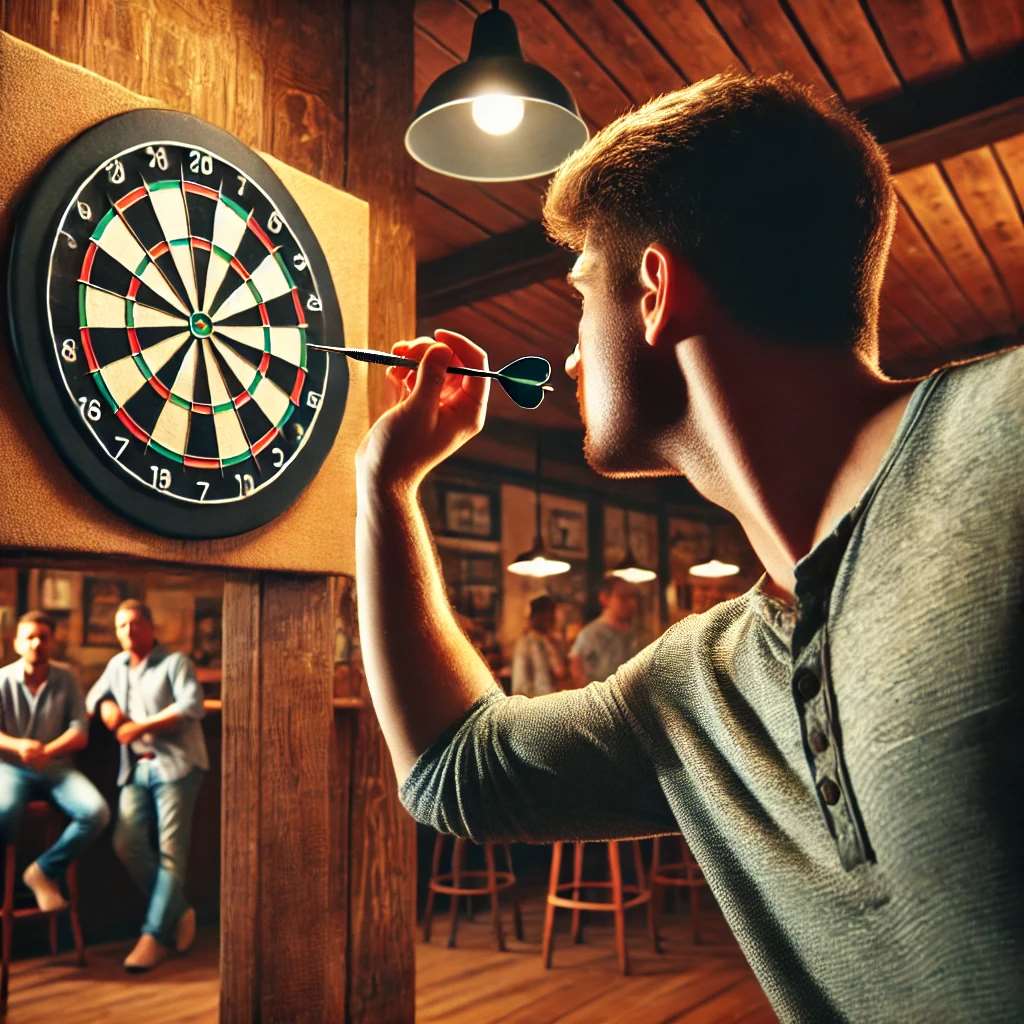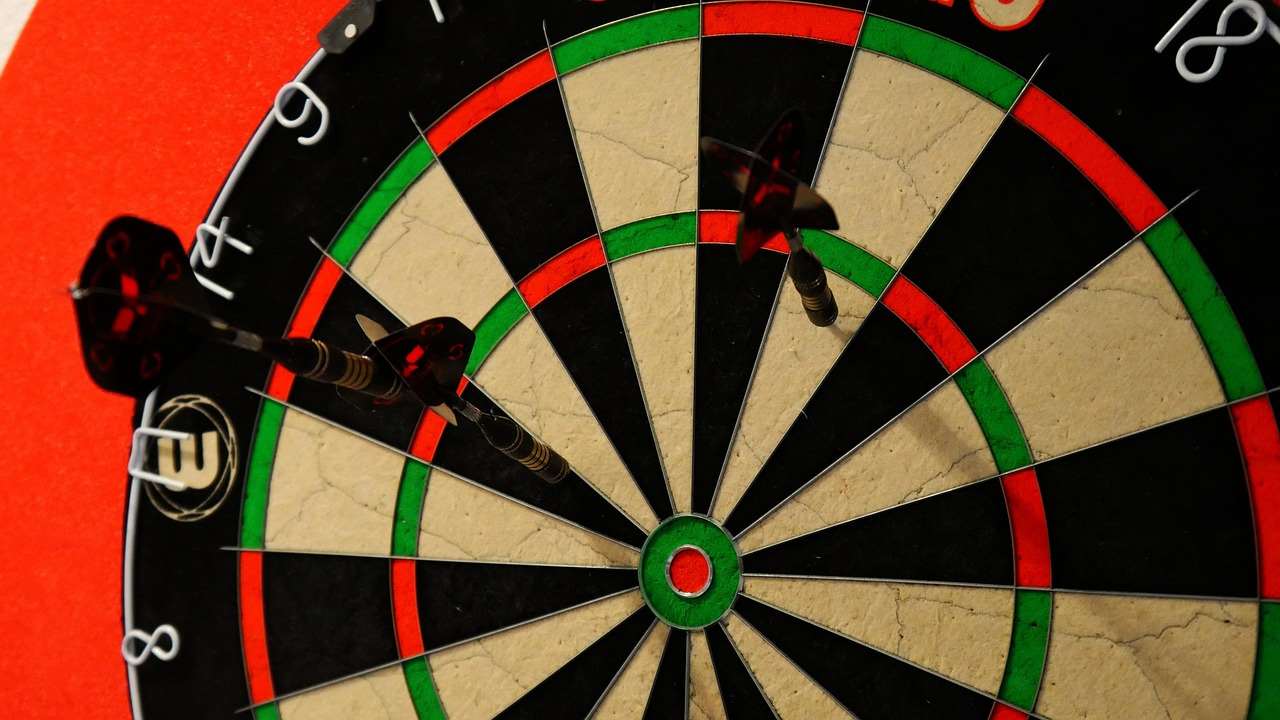Mastering the art of the darts double out is crucial for consistently winning legs of darts; it’s the final step in reducing your score to zero and claiming victory. This article will guide you through everything you need to know about finishing on a double, including popular checkouts, strategic play, and practice drills to sharpen your accuracy.
⚠️ Still Using Pen & Paper (or a Chalkboard)?! ⚠️
Step into the future! The Dart Counter App handles all the scoring, suggests checkouts, and tracks your stats automatically. It's easier than you think!
Try the Smart Dart Counter App FREE!Ready for an upgrade? Click above!
Understanding the Darts Double Out Rule
In standard games of 501 and many other variations, the darts double out rule dictates that you must finish the game by landing a dart in the double ring of a number that exactly reduces your score to zero. Failing to hit the double or going below zero results in a bust, and your turn ends with your score reverting to what it was at the start of that turn. This adds a layer of strategic complexity to the game, requiring careful planning and precise execution.
Why is the Double Out Rule Important?
The double out rule prevents players from simply hammering the treble 20 until they reach a low score. It forces players to develop accuracy and composure under pressure. A player with a high scoring average might still lose to someone who is proficient at finishing on doubles. Mastering the darts double out significantly improves your chances of winning.

Common Darts Double Out Checkouts
Certain checkout combinations are more common than others due to their practicality and ease of setup. Knowing these combinations and practicing them regularly will give you a significant advantage. These **darts double out** combinations can give you an edge.
- Double 20 (D40): The most obvious and often easiest checkout, especially after leaving yourself with 40 after two darts.
- Double 16 (D32): A popular choice, particularly when a treble 20 is missed, leaving 32. It’s also a good option when strategically setting up a finish.
- Double 18 (D36): A slightly less common but still valuable checkout, often used when a player is slightly off target.
- Double 12 (D24): Useful when setting up alternative finishes or recovering from a poor throw.
- Double 8 (D16): A good option to have in your arsenal.
- Bullseye (D50): While not technically a double, it acts as one for finishing purposes if you have 50 left.
Beyond single double finishes, knowing combinations to get to a double is also very important. For instance, 60 to leave double top (D20) is a common and effective setup, and leaving yourself on a number that is not divisible by two can make a darts double out a little trickier.
The Importance of Setup Shots
Often, you won’t be able to finish directly with your first dart. That’s where setup shots come in. These are throws designed to leave you with a manageable double checkout. For example, if you have 81, you might aim for a single 17 to leave 64 (double 32). Or you may be in a darts match fight and need to consider every angle.

Strategic Darts Double Out Play
Beyond just knowing the checkouts, strategic thinking is essential for consistently hitting your doubles. This includes considering your opponent’s score, your own throwing ability, and the potential outcomes of each throw. Sometimes it’s even worth considering the darts players line.
Playing the Percentages
Experienced players often “play the percentages,” meaning they choose the checkout that gives them the best chance of success, even if it’s not the most obvious. For example, if a player is struggling with double 20, they might aim for a different number that leaves them on a double they are more comfortable with. Knowing what darts double out you are most comfortable with is important.
Blocking Strategies
In some situations, you might want to “block” your opponent by leaving them with an awkward score or preventing them from having a clear shot at a double. This is a more advanced tactic but can be effective in close games. You may have to think of evo dart point system strategies at this level.
Practice Drills for Darts Double Out
The only way to truly master the darts double out is through consistent practice. Here are some drills you can use to improve your accuracy and build confidence.
- Around the Clock Doubles: Start at double 1 and work your way around the board, hitting each double in order.
- Target Practice: Choose a specific double and throw multiple darts at it, focusing on consistency.
- Checkout Scenarios: Simulate real game scenarios by starting with a specific score and trying to check out in as few darts as possible.
- Pressure Practice: Introduce pressure by setting goals or competing against yourself or others.
Consistency is key, and even short, regular practice sessions can make a big difference. There are even darts training darts counter voice programs to help you improve.

Troubleshooting Common Darts Double Out Problems
Even with practice, you’ll inevitably encounter challenges when trying to finish on a double. Here are some common problems and how to address them.
Missing Low
If you consistently miss low, try adjusting your stance or grip to bring your arm angle up slightly. Make sure you are following through with your throw. The target darts laser oche can help with stance accuracy.
Missing High
If you consistently miss high, try lowering your arm angle or focusing on releasing the dart slightly earlier. Try to be more consistent when releasing dart too late.
Nervousness
Nerves are a common issue, especially in important games. Practice relaxation techniques, such as deep breathing, to calm your mind and body. Focus on your pre-throw routine and trust your training.

Equipment and its Impact on Your Double Out
While skill is paramount, your equipment can also play a role in your success with darts double out. Choosing the right darts and setup can make a subtle but noticeable difference.
Dart Weight and Grip
Experiment with different dart weights and grips to find what feels most comfortable and allows you to throw consistently. What is comfortable to one person might be terrible for another.
Shafts and Flights
Different shaft lengths and flight shapes can affect the trajectory of your darts. Experiment to find a combination that provides optimal stability and accuracy. The wrong bullseye darts flights can ruin your throwing form.
Dartboard Condition
Ensure your dartboard is in good condition and properly maintained. Rotate it regularly to even out wear and tear. Damaged dartboards can have unintended consequences on your score and cause darts to bounce out. Make sure each dart segment sap is properly positioned.

Advanced Darts Double Out Techniques
Once you’ve mastered the basics, you can explore more advanced techniques to further improve your finishing game. This might be more important than the dart walk ons.
Calculated Risk
Sometimes, taking a calculated risk can pay off. For example, if you have a high score and only one dart left, you might go for a risky setup shot rather than a guaranteed single. This depends on the situation and your confidence.
Mental Toughness
Mental toughness is crucial for success in darts, especially when facing pressure situations. Develop strategies for staying focused, managing your emotions, and bouncing back from setbacks. Remember the words of wisdom from past Cricket darts scorer app winners!
Conclusion
Mastering the darts double out is a journey that requires dedication, practice, and strategic thinking. By understanding the rules, learning common checkouts, practicing regularly, and developing your mental game, you can significantly improve your finishing ability and increase your chances of winning. Start practicing these techniques today, and you’ll soon be checking out like a pro!
Hi, I’m Dieter, and I created Dartcounter (Dartcounterapp.com). My motivation wasn’t being a darts expert – quite the opposite! When I first started playing, I loved the game but found keeping accurate scores and tracking stats difficult and distracting.
I figured I couldn’t be the only one struggling with this. So, I decided to build a solution: an easy-to-use application that everyone, no matter their experience level, could use to manage scoring effortlessly.
My goal for Dartcounter was simple: let the app handle the numbers – the scoring, the averages, the stats, even checkout suggestions – so players could focus purely on their throw and enjoying the game. It began as a way to solve my own beginner’s problem, and I’m thrilled it has grown into a helpful tool for the wider darts community.